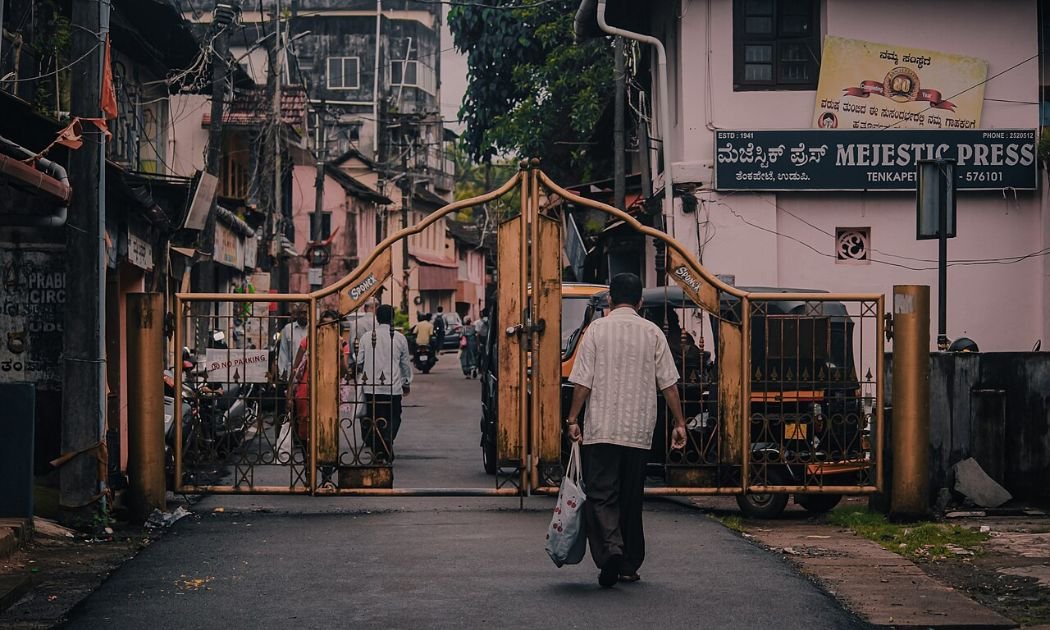Lynching in Mangaluru, a City Haunted by Hate
April 30, 2025
Photo by Samrudh Kottary, via Wikimedia Commons
Ashraf, a Muslim and daily wage labourer from Wayanad, Kerala, had arrived in this coastal Karnataka city just weeks earlier. On the evening of April 27, he was found dead near a temple in Kudupu—barely 10 km from Mangaluru city’s centre. Reportedly killed on the sidelines of a cricket match, his death was a brutal act that felt grimly familiar.
According to police, Ashraf, in his forties, had been assaulted and killed by a mob of more than 25 men, 15 of whom have been arrested, as reported by Manorama. Most of those named in the FIR (first information report) under murder and hate crime provisions are local residents.
This is the first case in Mangaluru where police have invoked Section 103(2) of the Bharatiya Nyaya Sanhita—recently introduced to prosecute hate crimes and mob lynchings. But the city has seen such crimes, and worse, long before this law existed.
The cricket ground in Kudupu, where Ashraf was reportedly killed, has been at the centre of local identity politics. Speaking to Manorama, a local politician referred to it as the “Hindu Maidan”—meaning a ground belonging to Hindus—or “Samrat Maidan,” which translates to “Emperor’s Ground.” The naming, while unofficial, points to the area’s communal undercurrents and the assertion of religious identity over shared public spaces.
Kudupu lies in the once-bucolic western fringe of Mangaluru, in Dakshina Kannada district—a region that has steadily earned a reputation as one of India’s most communally polarised belts.
In recent years, Mangaluru, formerly Mangalore, has seen repeated acts of “moral policing,” attacks on interfaith couples, violence over alleged cow slaughter and a spate of organised assaults on religious minorities.
I witnessed Mangaluru’s transformation firsthand when I reported on its descent into communalism in a magazine feature 16 years ago.
Historically, Mangaluru was a diverse and largely harmonious port town. Catholics, Muslims, Hindus from different castes, and migrants from Goa, Kerala and across Karnataka lived side by side, often identified more by their community and occupation than their religion. But this character began to fray in the 1980s, when Hindu nationalist groups intensified their ground presence in coastal Karnataka.
The rise of Rightwing groups such as the Bajrang Dal, Hindu Jagaran Vedike, and later Sri Ram Sene—often targeting Muslims and Christians over alleged conversions, attire, pub visits or beef consumption—created a climate of fear and hostility.
After the Babri Masjid demolition in 1992, violence erupted in Mangaluru too, killing 78 people. In the decades since, the city has swung between communal calm and sudden flare-ups—church attacks in 2008, pub assaults in 2009 and more recent incidents involving vigilante mobs.
In the 1990s, as communal tensions deepened in coastal Karnataka, Mangaluru became fertile ground for the convergence of crime, ideology and resentment. Ravi Poojari—once part of the Mumbai underworld—returned to his native region, coastal Karnataka, and began aligning with Rightwing Hindu sentiment. Unlike traditional dons who operated from the shadows, Poojari cultivated a public image tied to Hindu nationalism, offering both protection and intimidation in service of a political narrative. His operations increasingly took on a communal colour, with Muslims often targeted for extortion and violence.
At the same time, Islamist networks began capitalising on the growing alienation and anger among sections of Muslim youth in the region. The Bhatkal brothers—Riyaz and Iqbal—originally from the nearby town of Bhatkal, had travelled to Pakistan for training and returned to the coastal belt in the early 2000s. They found in Mangaluru a city already fractured along religious lines, where fear and resentment could be turned into recruitment.
These dual forces—Rightwing vigilantism on one end, radical Islamist mobilisation on the other—thrived in the same atmosphere of suspicion, silence and state complicity. The violence at the time came not just from one side, but from all directions—each feeding off the other’s presence, and each justifying itself through the language of victimhood and retaliation.
Further, Hindu nationalist groups channelled economic and social anxieties among backward caste Hindus.
The city’s traditional caste hierarchies—with communities like the Bunts and Goud Saraswat Brahmins gaining economic power through land reforms and Gulf migration—created deep resentment among backward communities like the Billavas and Mogaveeras, who were left out of the development narrative. These groups became susceptible to the influence of Rightwing organisations, which channelled their grievances against Muslims and Christians, who were perceived as economically and socially mobile.
It’s not surprising that mobs in Mangaluru have often performed violence as spectacle, a show of power intended to intimidate. In past cases, such as the 2008 attacks on churches or the 2009 pub assault, the perpetrators filmed or invited media to record their actions.
The latest killing over a decade later fits that script. It’s about sending a message.
The fact that Ashraf was a migrant adds another layer. In a city where anxieties over jobs, land and identity simmer beneath the surface, outsiders—particularly those from the Muslim community—become easy targets.
For years, families of victims and civil society groups in Karnataka have demanded that police stop sanitising communal killings as “group clashes” or “personal disputes.” The use of Section 103(2) in Ashraf’s case is a departure from that trend.
The clause, under the new Bharatiya Nyaya Sanhita, is specifically for hate crimes involving five or more people attacking someone based on identity. If proven, the punishment could range from seven years in prison to life imprisonment or even the death penalty – though rights advocates have long criticised capital punishment as unjust and irreversible. Otherwise, the provision is welcome, but only meaningful if the charges stick in court.
It remains to be seen whether the law can bring change in a city where communal tension continues to simmer—stoked by politics, sustained by silence.
Meanwhile, the truth remains: Ashraf’s murder is not an aberration. It is a consequence.

